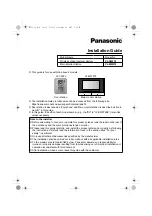
WAGO I/O System 750 XTR
Function Description 41
750-495/040-010 3-Phase POM 20KV 300A XTR
Manual
Version 1.0.0
Harmonic analysis
Meaning of “upper harmonic”
“First harmonic” refers to the vibration at the fundamental frequency
(fundamental component), and “first
upper
harmonic” refers the vibration at twice
the fundamental frequency. Therefore, in general, the
n
th harmonic corresponds
to the (
n−1
)th upper harmonic.
The I/O module calculates the frequency spectrum for the periodic input signals
and analyzes the fundamental component and the first to 40th upper harmonics
for each phase, i.e. the first to the 41st harmonics. This analysis can be
performed on one of the 3 phases (L1, L2 or L3).
The I/O module always yields the RMS values for current and voltage of the
fundamental component for the selected phase. It also provides the total
harmonic distortion (THD) for current and voltage.
From the 40 upper harmonics, 3 can be selected and analyzed at the same time.
The RMS value for current and voltage is calculated for each selected upper
harmonic, along with the harmonic distortion (HD). The 3 upper harmonics can
be freely selected, e.g., 4, 12 and 19, or 2, 35 and 40.
Calculation of Power Factors
The power factor
cos phi
is the cosine of the phase angle between voltage and
current for the specific phase. Calculation of the power factor only takes into
account the phase shifting of the fundamental components of voltage and
current. The sign of “cos phi” indicates the following:
•
Positive (plus) sign:
import of active power from the network
•
Negative (minus) sign: export of active power to the network
















































